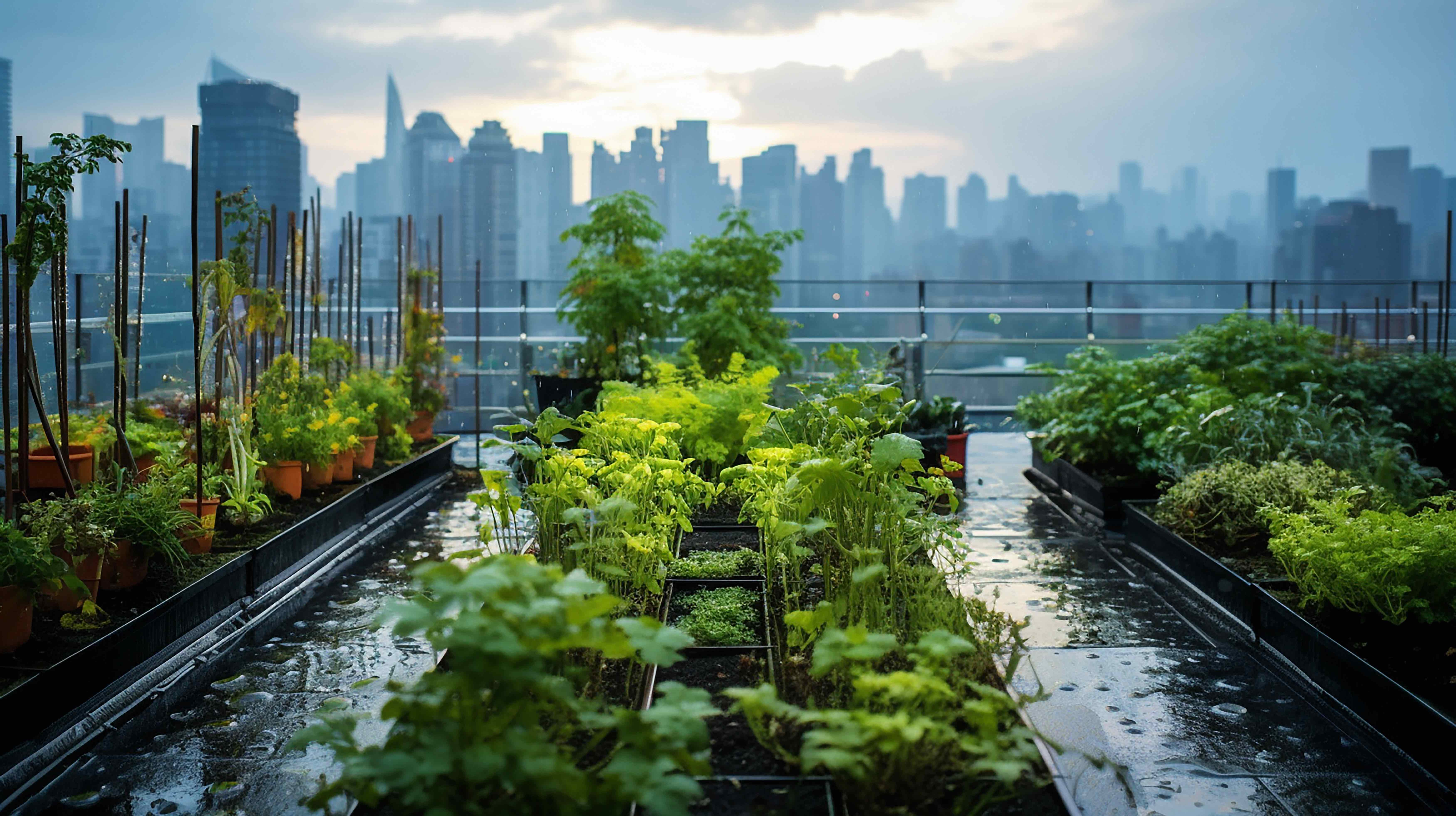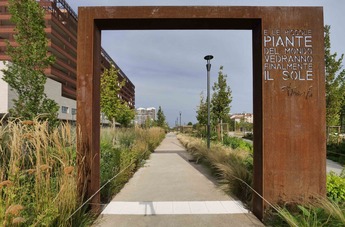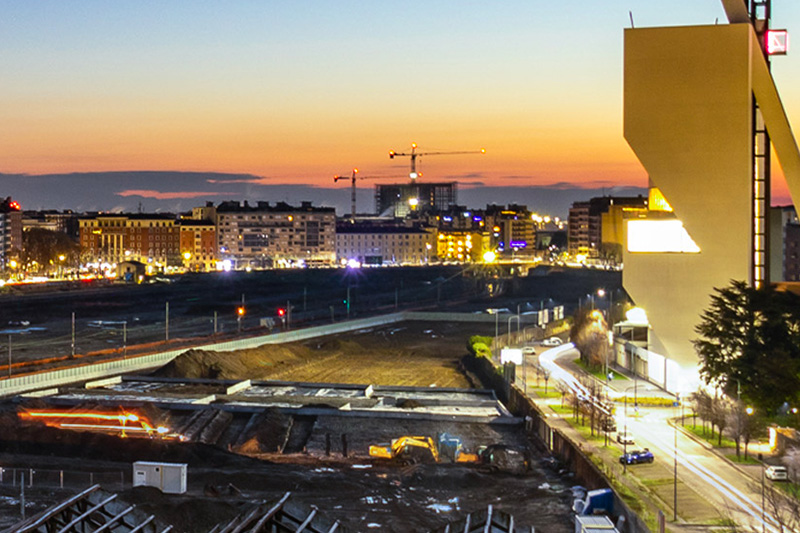
Variations in temperature and traditional weather patterns, a phenomenon we have become accustomed to calling climate change, is one of the main challenges for administrations and urban planning in the coming years. One of the most promising strategies involves making our cities as self-sufficient as possible from the point of view of water management and recycling. Today there are many initiatives in the field, in Italy and abroad, to counteract the effects of climate change and to make municipalities more virtuous from the point of view of sustainability through a particular type of urban garden called the "Rain Garden": a green space used to control the filtering of rainwater by delivering it to the sewer system in the slowest and cleanest way possible.
Let's delve into this booming phenomenon with Prof. Laura Gatti, lecturer in Green Building as part of the Master of Science in Plant Production and Protection program at Università degli Studi di Milano. "Rain Gardens, first conceived in the United States in the 1990s with the ambition of being not mere green areas, but true complex and multifunctional systems, can today represent a decisive step change toward a more sustainable and ecological approach to urban water management. They are undoubtedly virtuous and cost-effective examples of urban regeneration and nature-based design capable of making territories more resilient to climate change: these are green areas, generally placed at a low level and equipped with a highly draining substrate, designed specifically to accommodate temporary accumulations of rainwater."
While Rain Gardens are now indispensable elements of urban projects in recent years, the integration of nature into the urban environment is not only important in terms of sustainability, but also allows us to respond to different needs within the management of urban spaces. "In addition to being useful for keeping rainwater under control, these solutions offer many other environmental and social benefits," Prof. Gatti points out. "To give just a few examples, Rain Gardens contribute to cooling cities and enhancing biodiversity, improve air quality, reduce urban heat islands, and promote a deeper connection between humans and nature by increasing citizens' awareness of environmental aspects."
Read also: The era of sustainable cities has already begun

Prof. Laura Gatti, lecturer in Green Building as part of the Master of Science in Plant Production and Protection program at Università degli Studi di Milano
But that's not all. Capable of retaining even more than 50 percent of rainwater and then gradually releasing it into the sewer system to prevent its collapse in the event of flooding, Rain Gardens can prove to be valuable tools for limiting damage in the event of extreme weather phenomena, which are now increasingly frequent, and avoid infiltration problems, as they allow water to be channelled into undeveloped areas.
"A key aspect to be evaluated in the creation of these 'rain gardens' definitely concerns the choice of vegetation, thanks to which a form of purification of water is achieved before it is conveyed into the surface aquifer," Prof. Dr. G. G. intervenes. "The number of plants that can potentially be used is very large, but preference is given, on the one hand, to those that are suitable for tolerating both dry periods and high rainfall, as well as high humidity conditions at depth, and on the other hand, to native species, in order to preserve and increase local biodiversity." Among the species that showed the most promise, according to research with a focus on the Veneto region published in the journal Urban Forestry and Urban Greening, are Hemerocallis Hybrida, Astro september, water iris, smooth weed, and yellow daisy.
Having ascertained their many benefits, for more than a decade Rain Gardens have become part of the Landscape regulations of many cities around the world, where they take on different configurations. "From solutions in residential or neighborhood settings to those for cities, with efficient and sustainable urban drainage systems, to vegetated bioretention areas, the categories of Rain Gardens are constantly evolving. The sine qua non for implementation is that there must be a green area at least 1.5 meters wide, away from utilities and built structures, and alongside a road, sidewalk or bike path."
Read also: A sustainability and inclusion model
There are many virtuous examples coming from abroad. In Adelaide, Australia, the 'Water Sensitive Urban Design' (WSUD) programme has been implemented, an approach to urban planning that integrates water cycle management into the city's development process, while in Maplewood, Minnesota, there are 450 Rain Gardens for 30,000 inhabitants, a very high percentage of gardens at the service of the city and entirely cared for and maintained by the inhabitants. In Europe, the most avant-garde city is undoubtedly London, which has mapped all the urban drainage initiatives implemented in recent years, inviting citizens to create their own. On the continent, the Hans Tavsense Korsgade city park in Copenhagen offers an example of recycling in the service of public welfare: excess rainwater collected by the Rain Gardens is guided to the city's lakes and contributes to irrigation and to improving the local microclimate.

8 March Park in the Porta Vittoria district, an innovative model of rainwater management.
And Italy? “The regions that are moving the fastest are certainly Lombardy and Emilia-Romagna,” says Prof. Gatti. "In Milan, for example, the 8 March Park in the Porta Vittoria district represents an innovative model of rainwater management, in a totally ecological manner and without the use of plastic materials, in a densely populated urban context. It is a large urban redevelopment project that has provided the Lombard capital with a green area of over 28,000 square metres with recreational spaces for citizens, while creating a habitat rich in biodiversity”.
Read also: Urban parks: a balance between inclusion, development and wellbeing
Similarly, in Emilia-Romagna, the adoption of urban design and planning guidelines that include Rain Gardens highlights the region's commitment to sustainable and resilient solutions to climate change. "Another interesting case is the Urban Wetland in Trento, a project designed for the treatment and reuse of rainwater through a phyto-purification system integrated in the garden areas, which has made it possible to create a usable area of high landscape and architectural quality, rationalising the use of water resources".
Although Rain Gardens integrate harmoniously with the urban fabric, improving the resilience of cities to climatic challenges and the quality of life of their inhabitants, their implementation has sometimes caused dissatisfaction, as Prof. Gatti explains. "Some time ago, for example, the reconfiguration of the urban space in Via Pacini, Milan, with the creation of a large tree-lined area and a Rain Garden, led to a reduction in parking spaces and the resulting initial resistance from citizens who, through constructive dialogue, were soon shown that the benefits of creating these green areas far outweighed the objections".
The Rain Gardens are therefore natural urban regeneration solutions that allow, on the one hand, to give a new face to certain areas of the city and, on the other, to mitigate the risks of flooding and pollution of waterways. "What is hoped for the future is that the large-scale diffusion of these temporary water storage basins, which also have an aesthetic beautification function, can contribute to the development of multifunctional places, capable of offering benefits to the community and the environment".



